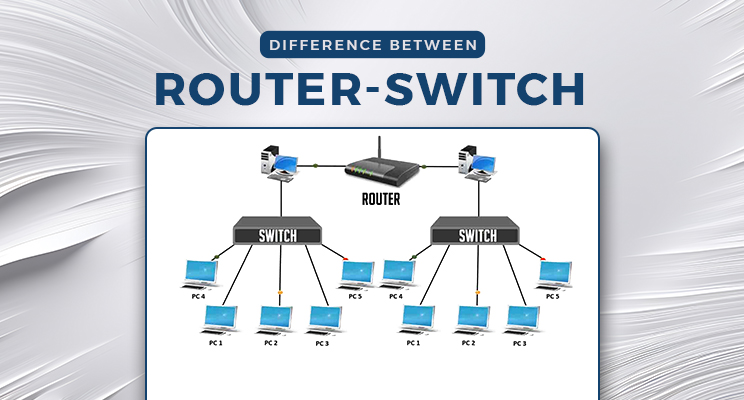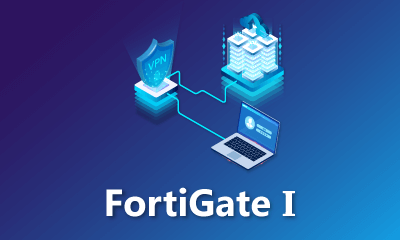Switching vs Routing: Key Differences Every Networking Student Must Know

Strong 8k brings an ultra-HD IPTV experience to your living room and your pocket.
Switching vs Routing: Major Differences Every Networking Student Should Know
When venturing into the realm of networking, knowing how difference between switching and routing is pivotal for every student, particularly those who are getting ready to take certifications such as CCNA and CISSP. The two fundamental concepts serve as the foundation upon which data will be carried through networks, and an excellent understanding of them is indispensable if one is to perform well in any computer network MCQ, computer network security MCQ, or professional exam like those available in CCNA training online or a course in CISSP.
We at UniNets equip our students with real-world experience, practical situations, and exam-oriented training to make these topics clear as crystal. In this article, we will demystify switching and routing, compare their functionality, and discuss their applicability in certification training and network setup.
What is Switching?
Switching is a technique employed on a local area network (LAN) to move data from one device to another device on the same network. The switch receives data from a device and sends it to only the device it is addressed to, based on MAC (Media Access Control) addresses.
Key Characteristics of Switching:
Works at Layer 2 (Data Link Layer) of the OSI model
Utilizes MAC addresses to make forwarding decisions
Best for LAN environments
Minimizes collisions by establishing dedicated paths of communication
Allows VLAN segmentation with the support of advanced features such as Dynamic Trunking Protocol (DTP)
Switches are intelligent devices that make a LAN perform better and securely by reducing unnecessary data transmission. Knowing how switching functions is critical in answering computer MCQ and networking MCQ questions with respect to LAN technologies.
What is Routing
Routing involves the forwarding of data across various networks through routers. While switches depend on MAC addresses for determining the most suitable path for data packets, routers depend on IP addresses.
Major Characteristics of Routing:
Works at Layer 3 (Network Layer) of OSI model
Depends on IP addresses for choosing the path
Facilitates communication across various networks
Supports WAN (Wide Area Network) connections
Involve routing protocols such as OSPF, BGP, and EIGRP
Routing is crucial to large-scale network operation. Configuring static or dynamic routing, students have to become experts in routing to complete CCNA online training and get ready for advanced jobs in network security.
Switching vs Routing
The distinction between switching and routing is at the center of most networking MCQ and certification exams. This is how they relate conceptually:
Functionality: Switching for communicating within the same network; routing for communicating across different networks.
Layer: Switch operates at Layer 2; routing functions at Layer 3.
Addressing: Swtiches employ MAC addresses; routers employ IP addresses.
Speed: Switching is generally faster as it entails less complicated work.
Devices: Switch vs Router – varying roles in hardware for network design.
Protocols: Switching encompasses protocols such as Dynamic Trunking Protocol; routing has protocols such as RIP, OSPF, and BGP.
Understanding these differences is crucial not just for exams but also for practical tasks in IT jobs and network administration roles.
Significance in Certification Exams: CCNA & CISSP
CCNA Course Online and CCNA Training Online:
The Cisco Certified Network Associate (CCNA) credential is among the most demanded for network professionals. Whether learning through an online CCNA course or in-person CCNA training online, you'll face numerous questions on routing, switching, VLANs, and protocols like Dynamic Trunking Protocol.
All of these subjects also come under networking MCQ types throughout the course. If a student understands the distinction between switching and routing, they can pass both theoretical examinations as well as simulations in labs.
CISSP Course and CISSP Training:
For cybersecurity experts, the CISSP (Certified Information Systems Security Professional) course focuses on a wider perspective. Routing and switching do not constitute the core area of study, but network behavior is crucial for evaluating threats and vulnerabilities.
Computer network security CISSP and MCQ training classes quite frequently discuss how switches and routers can be vulnerable attack surfaces, and how protocols come into play with regard to data transmission security.
Switching and Dynamic Trunking Protocol
A key protocol that relates to switching is Dynamic Trunking Protocol (DTP). This Cisco-owned protocol negotiates trunk links automatically between switches, which allows traffic from many different VLANs to be transmitted over one physical link.
Mastering DTP is crucial for:
Setting VLANs in CCNA laboratory configurations
Resolving inter-switch connectivity issues
Responding to computer network MCQ and simulation-based questions in exams
Switching and Routing MCQ Preparation
Most students preparing for competitive exams or certifications practice using computer MCQ, computer network MCQ, and networking MCQ sets. The following are the key areas of focus:
Determine on which OSI layers switching and routing work
Know the kinds of addresses involved in each process
Learn the principal functions of switches and routers
Get to know protocols such as DTP and routing protocols (RIP, OSPF)
Read live examples where both are implemented together
At UniNets, we offer rigorous MCQ practice material and mock tests to assist learners in gaining confidence before taking certification exams.
Conclusion
The distinction between routing and switching is a fundamental area that all students of networking need to learn. While switching processes data within a network, routing processes data across networks. Regardless of whether you are taking online CCNA training, a CISSP course, or trying to solve computer network MCQ, having these basic distinctions will provide you with a good edge.
At UniNets, we are dedicated to assisting students to develop a strong base in network and cyber security. From learning Dynamic Trunking Protocol to excelling computer network security MCQ, our training schemes are created to prepare you for certification and employment.
Note: IndiBlogHub features both user-submitted and editorial content. We do not verify third-party contributions. Read our Disclaimer and Privacy Policyfor details.







